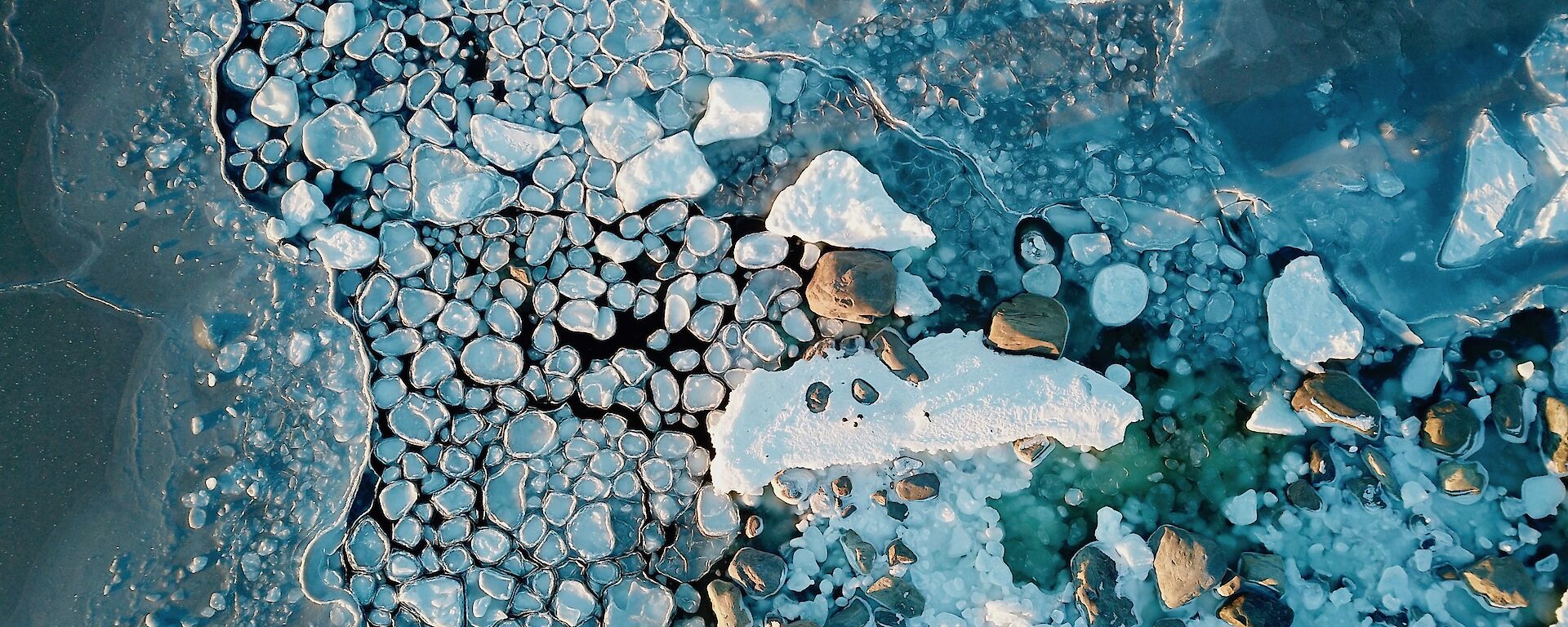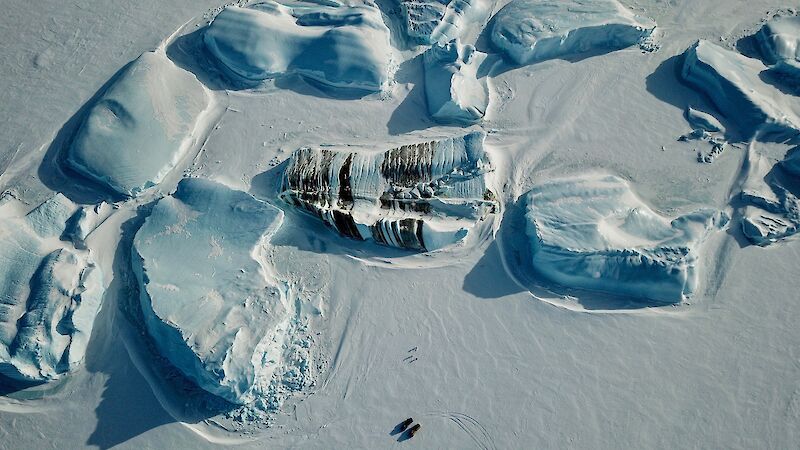Sea ice comes in a vast array of forms, and can be broadly described as new ice, young ice, and old ice. These categories reflect the age of the ice and include different forms and thicknesses of ice at various stages of development.
There are two major types of sea ice.
The first is 'land-fast' or ‘fast ice’, which is attached to the Antarctic coastline, islands or to grounded icebergs. Even in winter only a small fraction of sea ice close to the Antarctic continent occurs as a continuous and uniform sheet. This land-fast ice is pinned to the coast and does not move.
The second type of sea ice is ‘pack ice’, which is made up of ice ‘floes’ that move with winds, tides, currents and waves. It includes a range of sizes, ages and thicknesses, present in varying concentrations, due to the highly variable ice conditions of the region. It forms the majority of the ice that occurs in a wide band around the continent.
Learn more about sea ice in our multimedia feature 'Antarctic sea ice in crisis' (2024).



